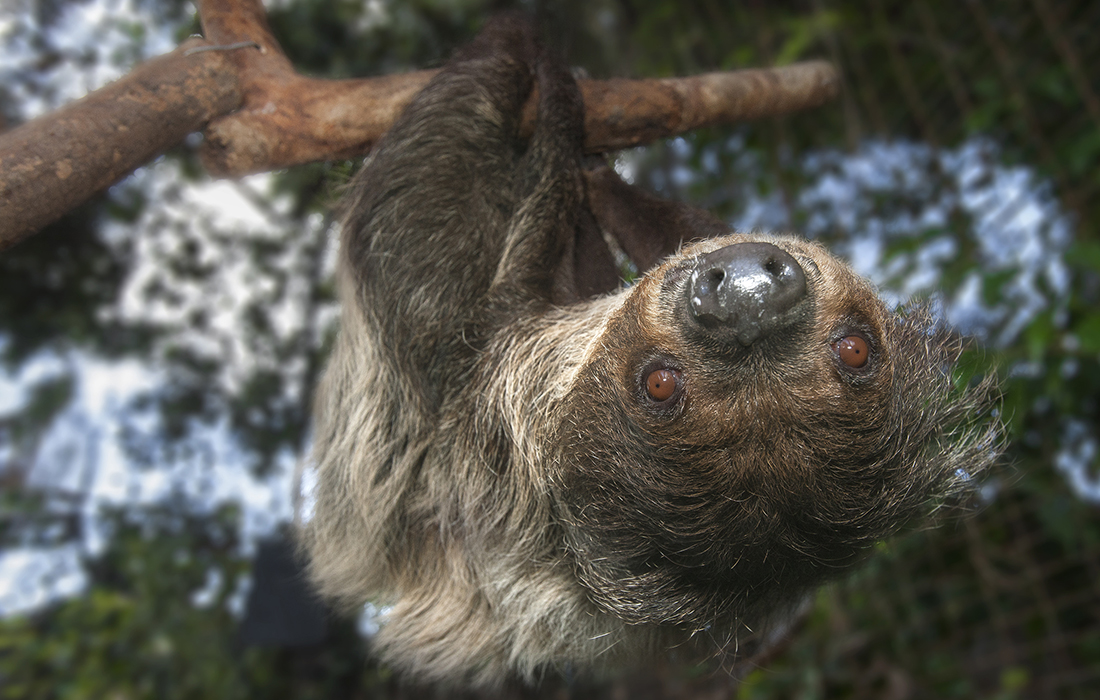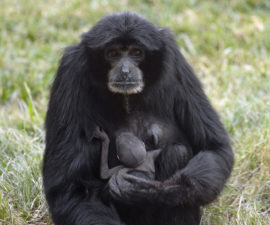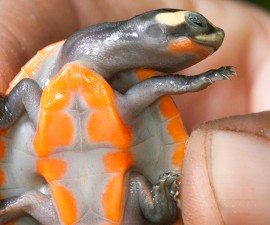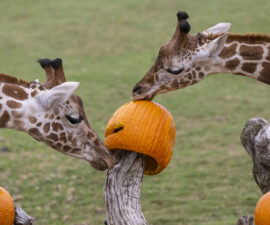BY Peggy Scott
Photography by Ken Bohn
If slow and steady wins the race, then sloths must be up to their button-like eyes in gold medals. Related to anteaters, these arboreal folivores make their home in the forest, where their leisurely outlook on life has paid off well—they are some of the most successful large mammals in Central and tropical South America.
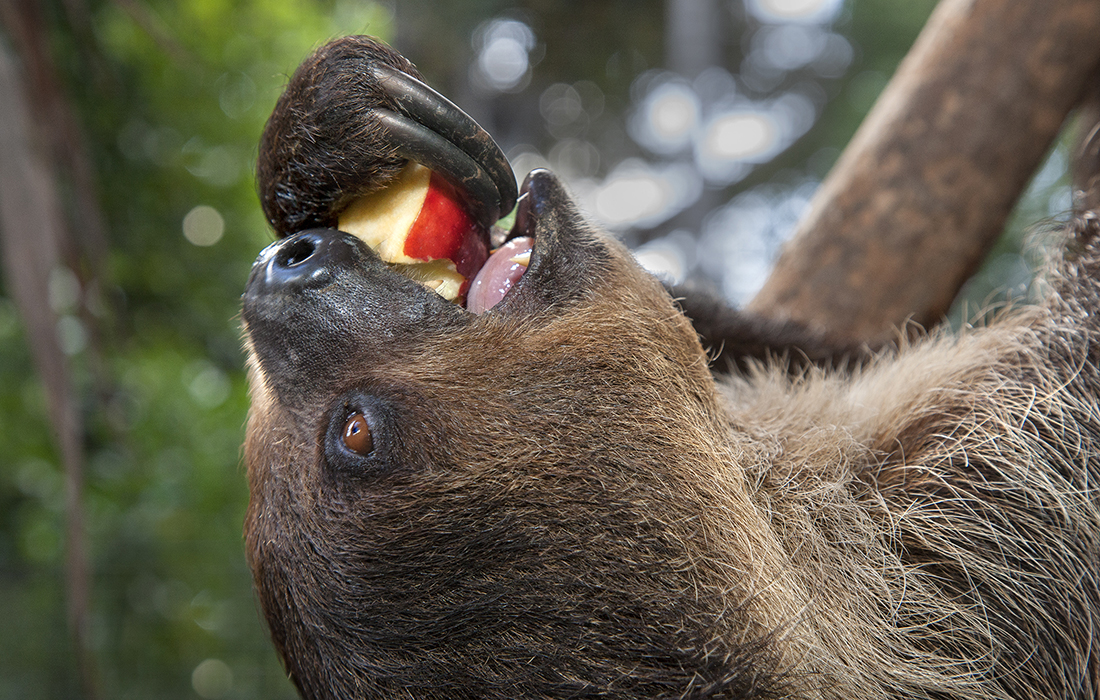
Digital Information
WWhen identifying a sloth species, you can “count” on getting a helping hand from the number of toes the animal possesses on its front limbs. Two toes on each? Then it could be a Hoffmann’s two-toed sloth Choloepus hoffmanni or a Linné’s two-toed sloth C. didactylus, also known as the southern two-toed sloth. Three digits? Then you’re dealing with a brown-throated sloth Bradypus variegatus, a pale-throated three-toed sloth B. tridactylus, a maned sloth B. torquatus, or the recently described and critically endangered pygmy three-toed sloth (Bradypus pygmaeus), found only on Isla Escudo de Verges in Panama. Geographic location can also be a clue. Sloths can be found in a range from Nicaragua through Colombia, Venezuela and the Guianas to north-central Brazil and northern Peru (the two-toed types); Honduras through Colombia, Venezuela and the Guianas to Bolivia, Paraguay, and northern Argentina; on the west to coastal Ecuador (three-toed).
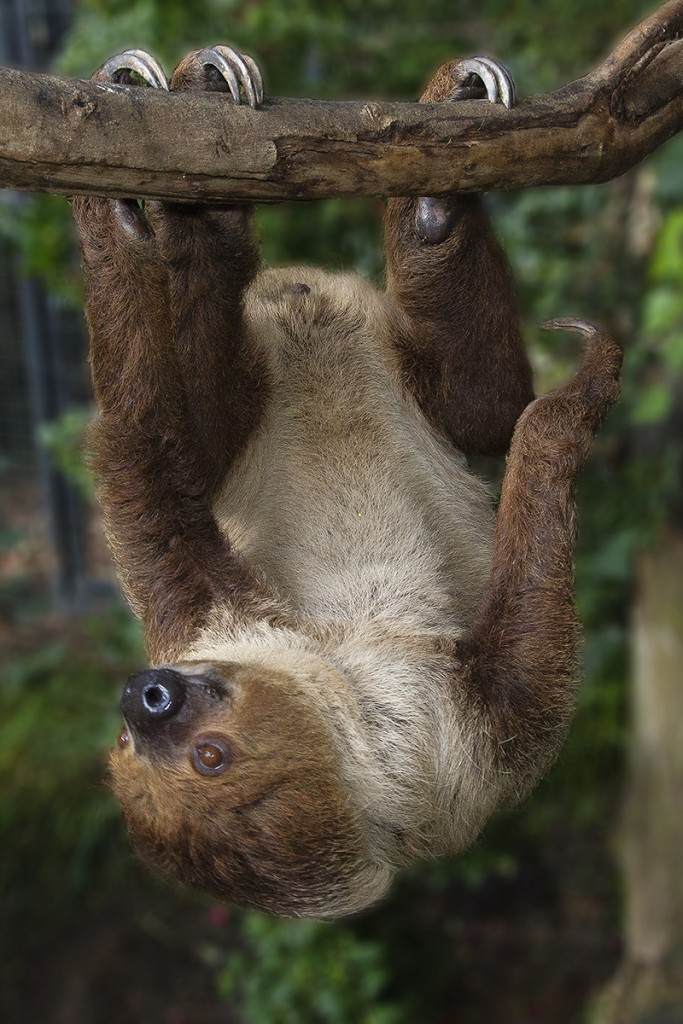
SAFETY “CLAWS”
Sloths’ claws curve around branches like safety hooks, allowing them to safely hang (and sleep) upside-down.
All of those toes come in handy for maneuvering through (and staying in) the rain forest canopy, as the sloth’s specialized, three- to four-inch-long claws aren’t just ideal for climbing—they curve around tree branches like a safety harness, keeping the animal securely in place even during sleep.
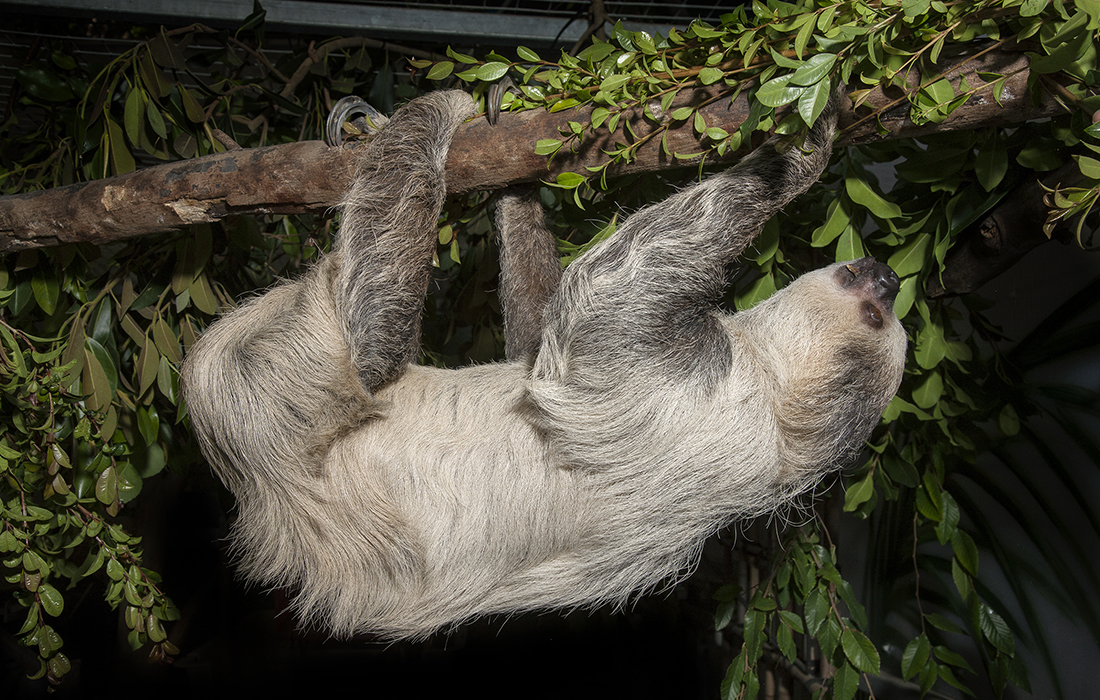
Out on a Limb
Sloths were built for life in the trees. Those claws help them get around and stay put when they need to. When on the go, sloths move through the canopy at a rate of about 40 yards per day, munching on leaves, tender shoots, and buds, although some two-toed sloths have been observed supplementing their diet with insects, small reptiles, and even birds. Sloths have an exceptionally low metabolic rate and spend up to 20 hours per day sleeping. And surprisingly enough, the long-armed animals are excellent swimmers and can drop from a tree into a river, to swim across it while doing the breaststroke!
These unique creatures are well-adapted for life upside-down. Their fur grows upward, from their bottom to the top, so that water will run off their coat while they are suspended from a tree branch. Their internal organs are also arranged differently than in other mammals, with adhesions anchoring their stomach, liver, and kidneys to their ribs so their lungs aren’t compressed as they breathe upside-down.
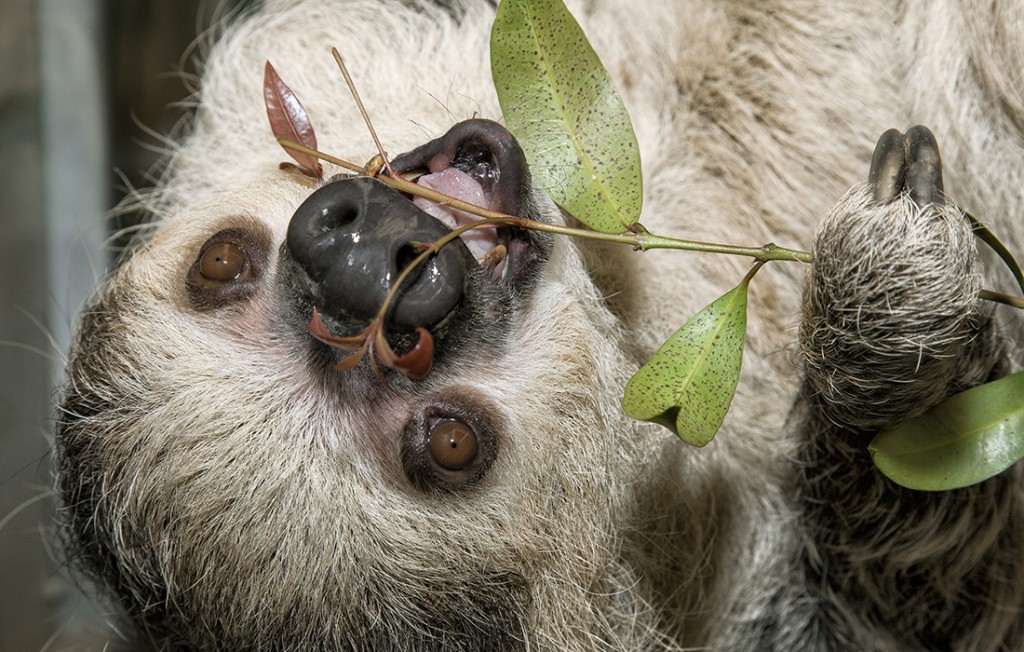
FAMILY RESEMBLANCE
Flattened faces, rounded heads, and small ears covered in fur are among sloths’ shared characteristics.
Generally speaking, two-toed sloths are larger, faster, and nocturnal, while the three-toed sloth is both diurnal and nocturnal. Two-toed sloths measure 21 to 29 inches long and they weigh between 10 and 20 pounds. Their three-toed brethren are a bit smaller, topping out at 23 inches long and 10 pounds. It’s hard to sneak up on a three-toed sloth, as it can rotate its head almost completely around!
Both species share certain characteristics, such as rounded heads and flattened faces with small ears hidden in fur. Their bodies are covered by short, fine underfur and an overcoat of longer, coarser hair which, in moist conditions, is suffused with green. This color comes from the presence of two species of blue-green algae that grow in grooves of the hairs, and help to camouflage animals in the tree canopy. These animals’ lack of speed also makes them attractive to their neighbors: sloths make a good habitat for other organisms, and a single sloth may be home to moths, beetles, cockroaches, fungi, and algae. All sloths have large, multicompartmental stomachs, which contain cellulose-digesting bacteria. A full stomach may account for almost a third of the body weight of a sloth, and meals may be digested there for more than a month. Potty trips are spotty at best: a sloth makes a weekly trip down to the ground to pass feces and urine!
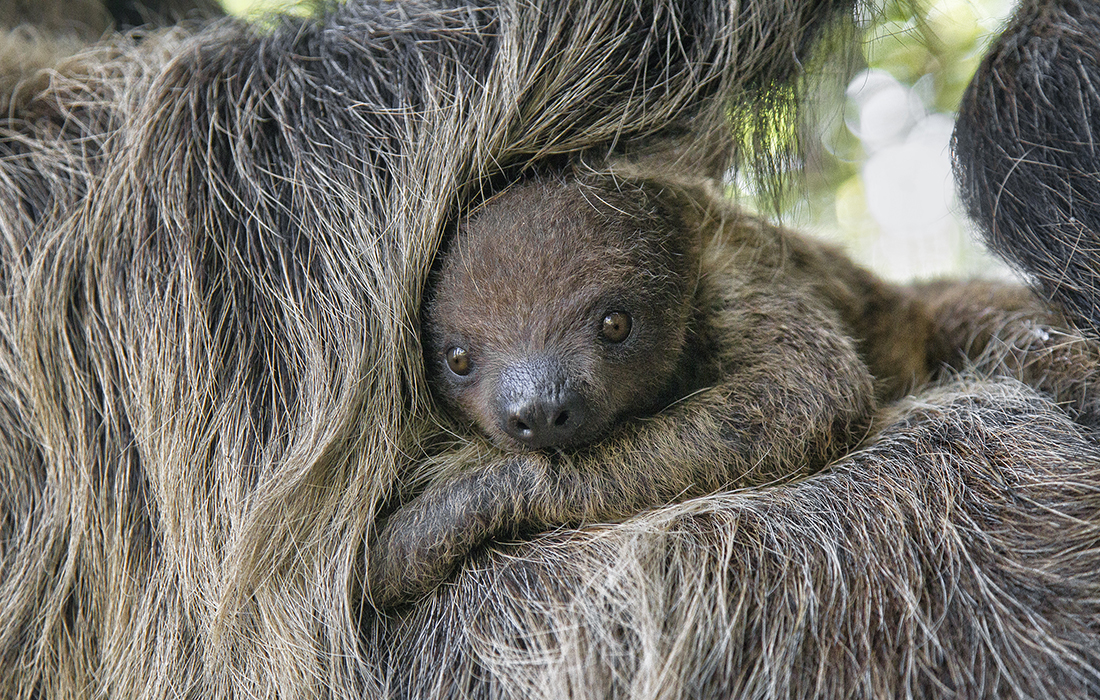
Our Sloth Family
The San Diego Zoo is home to something of a sloth dynasty. Consuela and Nico are the parents of Xena, Paloma, and Tika. Xena lives in the Children’s Zoo, Paloma is part of Backstage Pass, and Consuela, Nico, and Tika live in Elephant Odyssey. It seems as though the “kids” take after Mom when it comes to sociability.
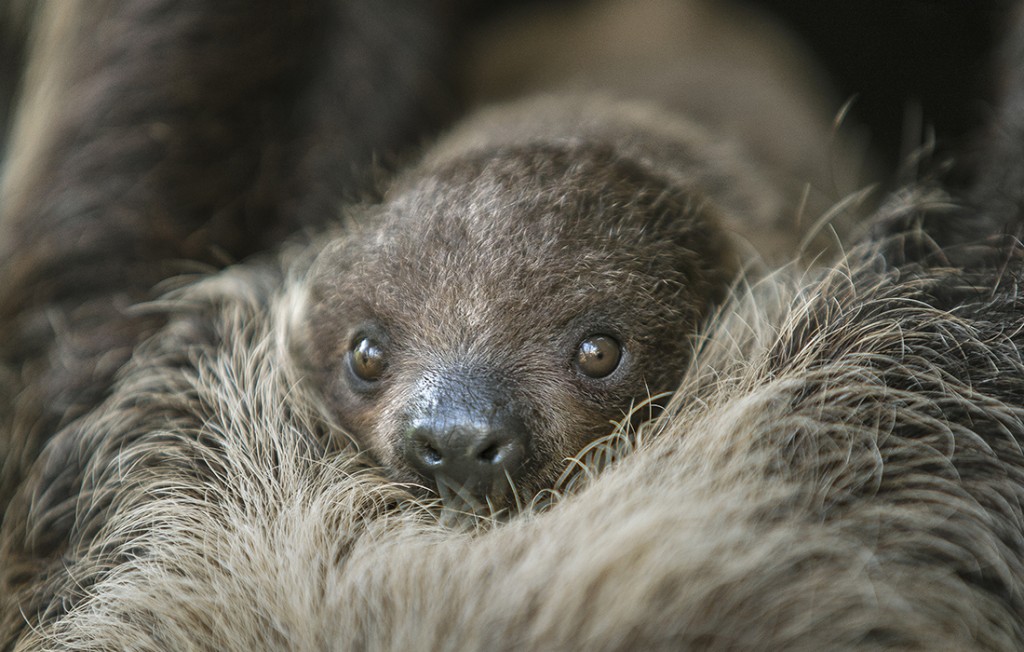
“Consuela is a really great mom,” says Kelly Elkins, a lead animal trainer at Backstage Pass. “We have two ambassadors that she raised. She’s very comfortable with keepers handling her babies.”
“Paloma has a sweet disposition and is an excellent ambassador for her species,” says Kelly. And with such charming representatives for the species, it’s no surprise that guests are taking their time in getting to know sloths as the the unique and fascinating creatures they are.

